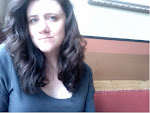Call to the Audience testimony, Tuesday October 9 2012
Good evening, Mr. Mayor and members of the council. My name is Shannon Cain and I live on Paseo Redondo in downtown Tucson. This is Part One of a 3-part final report on the literary performance art project Tucson the Novel: An Experiment in Literature and Civil Discourse, funded by the Arizona Commission on the Arts. Over the next three council sessions I’ll tell you what I did, what happened when I did it, and what I learned by doing it.
Nearly every Tuesday for a year and a half, I read my novel-in-progress, three minutes at a time, here at Call to the Audience. It’s a political story set in Tucson, with a culminating scene that takes place here in these council chambers. The idea was to keep reading until I got to the end or until the book was in stores, whichever came first. Well, neither came first. Neither came at all. I got about 75 pages into the 300 page manuscript, and then I stopped.


What happened? A lot of things happened. Six months after I began, my manuscript of short fiction—a different book, one I’d been writing off and on for 8 years—unbelievably won a great big fat prize. I found myself on a national book tour that included thirty-three readings in nineteen cities, over the course of 10 months. A huge event, a wonderful blessing, and a terrible thing, timing-wise, for this project. I was out of town as much as I was home. I managed to wrangle a few amazing guest readers—you’ll remember the teenagers from the Tucson High School drama department—but sustaining this became logistically difficult. How many of you could be persuaded to read somebody else’s unfinished novel at a council meeting, utterly out of context?


On the bright side, the book tour was bringing me into contact with audiences of college students and faculty, many of whom were fascinated with the project. I discussed Tucson the Novel before hundreds of listeners at places like Purdue University, University of Colorado, Colorado State, UC Davis, Middlebury College, Bowling Green State University and the University of Indiana.
The second thing that happened, though, was more profound: nine months into the project, we had the shootings at Safeway. That day, I was on a writing retreat in a house on a wintry beach in New Jersey, working on the novel. The book seemed to be coming along pretty well. It was changing through the process of reading it aloud to you, and a new voice was beginning to take over the narrative: sharper, cleaner, more precise. I liked it. At that desk in New Jersey I was just getting to the part where a boy named Jason enters the story, a character who is pivotal to the plot. Jason is eighteen and on the brink of schizophrenia. He’s also profoundly influenced by the political rhetoric of the left wing. He’s obsessed with Tucson’s evil developer, Eric Emerald, and in protest over a luxury shopping mall that Emerald plans to build at Tumamoc Hill, Jason plans and carries out a public act of violence against him.
I went for a walk on the snowy beach to clear my head and get ready to revise the next chapter, Jason’s. The shootings were happening as I stood on that beach, thinking about the ocean and the snow and about Tucson.
 |
| Avalon, New Jersey. January 8, 2011, 10:23 am |
As you can imagine, the similarities
between Jared Loughner and my character Jason stunned me. And pretty much
stopped me cold. When I got home to Tucson I went back to the manuscript again
and again, over the course of months. But I could not get past page 80, the
chapter where we are introduced to Jason. In my fictional world, Jason is a basketball star at Tucson High,
lives in Dunbar Springs, and is falling in love.
I was writing a novel about
contemporary Tucson. How could I possibly write a story about a young man
deluded by mental illness and out for violent political revenge? Then again,
how could I not?
Coming soon: Part II







